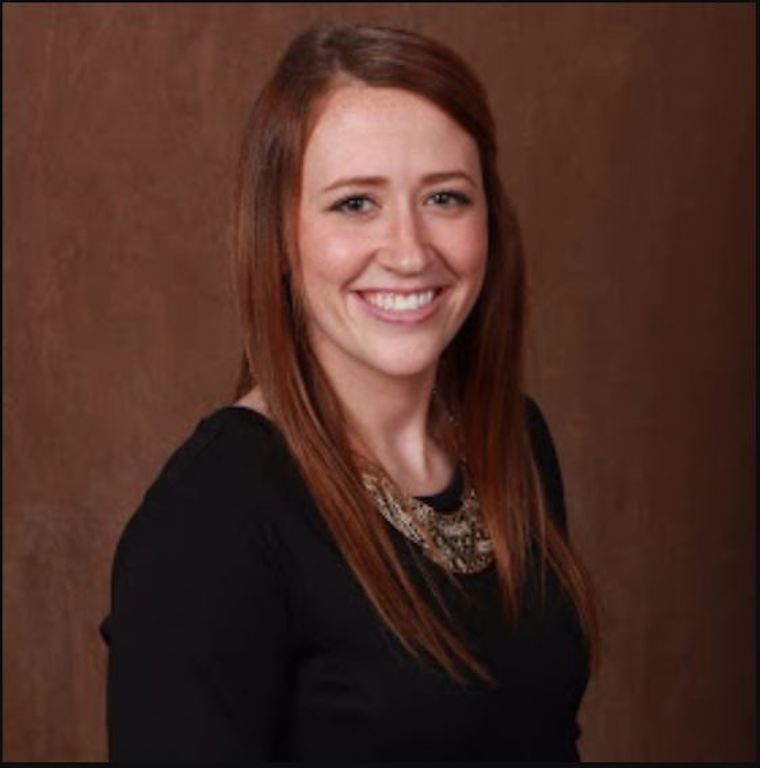In their poster, Waging War Against Physician Burnout: Overcoming the Barriers of Military Medicine with Personalized Patient Care Boards, Dr. Jessika Weber and colleagues from San Antonio Uniformed Services Health Education Consortium (SAUSHEC) present their project that looked at how customized magnetic care boards in patient rooms on the pediatric floors are helping to acclimate young patients to what can be a scary and intimidating situation. We talked to Dr. Weber about the project’s background and findings, and being involved in the ACGME’s Back to Bedside initiative.
Primary Author: Jessika Weber, DO
Co-Authors: Jean Bennett, MD; Liezl Zeeman, MD; Mary Pelszynski, MD; Candace Percival, MD
ACGME: Tell us about your academic and professional role.
Weber: I am the chief pediatric resident at SAUSHEC.
ACGME: Can you briefly describe your project for us?
Weber: Currently, each room on our inpatient pediatric floor has a plain whiteboard that personifies the cold, intimidating hospital experience for children. We have ordered customized, magnetic Personalized Patient Care Boards (PPCBs) to serve as a vibrant, interactive station for children and their families. The care boards include a “meet the team” corner with photos and cartoon avatars to help patients identify team members, a question of the day, collaborative games, interesting patient facts, and a detachable world map where families can identify previous duty stations and deployments. The care boards also include a medical section for patient’s questions, goals, and plan of care. During patient-centered rounds and daily encounters, the medical team, patients, and parents will interact with the care boards to spark meaningful discussions.
ACGME: What inspired you to do this project?
Weber: Resident physicians are encouraged to be present at the bedside caring directly for the patient, but often administrative tasks take priority. The dichotomy of these expectations can feel conflicting and unnecessary. It is exhausting. We felt we could enhance the quality of the residents’ and staff’s daily interactions with patients and family members to create positive, personal connections. By creating a sense of meaningfulness in work, we can not only improve resident overall well-being but combat physician burnout and improve patient-physician relationships.
ACGME: What did you discover?
Weber: Due to increasing external pressures, residents are missing crucial opportunities for enrichment of their patient relationships. Though most pediatric residents seem to find meaning in work and connection with patients, there are some residents that do not. These feelings lead to suboptimal patient care and attitudes. Additionally, there were patients/families that could not identify their physician or affirm clear communication during their child’s hospital stay. We need to create opportunities to forge deeper personal connections at the bedside between the physician and the patient.
ACGME: What was the main takeaway?
Weber: Trainees at SAUSHEC need ways to reconnect with the inspiration that internally motivated them to pursue medicine. One promising strategy to lessen physician burnout is to encourage systematic changes that foster meaning and joy in work. Implementation of the Personalized Patient Care Boards should improve resident perception in meaningfulness in their work, patient connection, as well as improve patient satisfaction with their hospital stay.
ACGME: Who could benefit from this?
Weber: Many studies have shown that improving patient-physician relationships increases patient compliance. Any institution, department or specialty can design PPCBs that fulfill their particular needs. They could also use their existing patient boards more effectively as a medium for communication. It does not have to be a physical representation of a PPCB, but rather an emphasis on creating a bond through direct, personal interaction with patients, as the care of patients and practice of medicine should be a personal experience.
ACGME: Any additional follow-up plans?
Weber: The global COVID-19 pandemic has drastically changed the targeted trajectory of our project, particularly as increased personal protective equipment (PPE) can provide an additional barrier in creating patient-physician relationships. However, we have taken to forging new, creative paths forward. Currently, we are awaiting shipment of our PPCBs and we are also looking at ways to include the outpatient pediatric clinic during a patient’s hospital follow-up visit. The plan will be for the inpatient team to communicate the newly discovered personal information to the outpatient provider to create instantaneous connections during brief encounters, including virtual appointments.
ACGME: Finally, can you talk a little about your involvement in Back to Bedside—why you wanted to get involved, and what it has meant to you and your colleagues?
Weber: As trainees, we felt the daily administrative duties were often cumbersome and tiring. It is difficult to feel motivated to care for others when you are interacting primarily with a computer screen. The hours are long, and you feel disconnected from medicine when you are not cultivating relationships. We wanted to get involved with Back to Bedside because we believed we found an opportunity to improve patient-physician interaction through engagement on a deeper level. This initiative has changed the way I personally view each patient encounter by encouraging me to feel more present in each little moment at the bedside, although it may be brief. It has also helped to build connections and collaborative relationships with other trainees across the country who identify similar struggles at their home institutions. I am hopeful that our PPCBs will encourage this change in trainees at SAUSHEC and continue to make an impact at other training hospitals.

